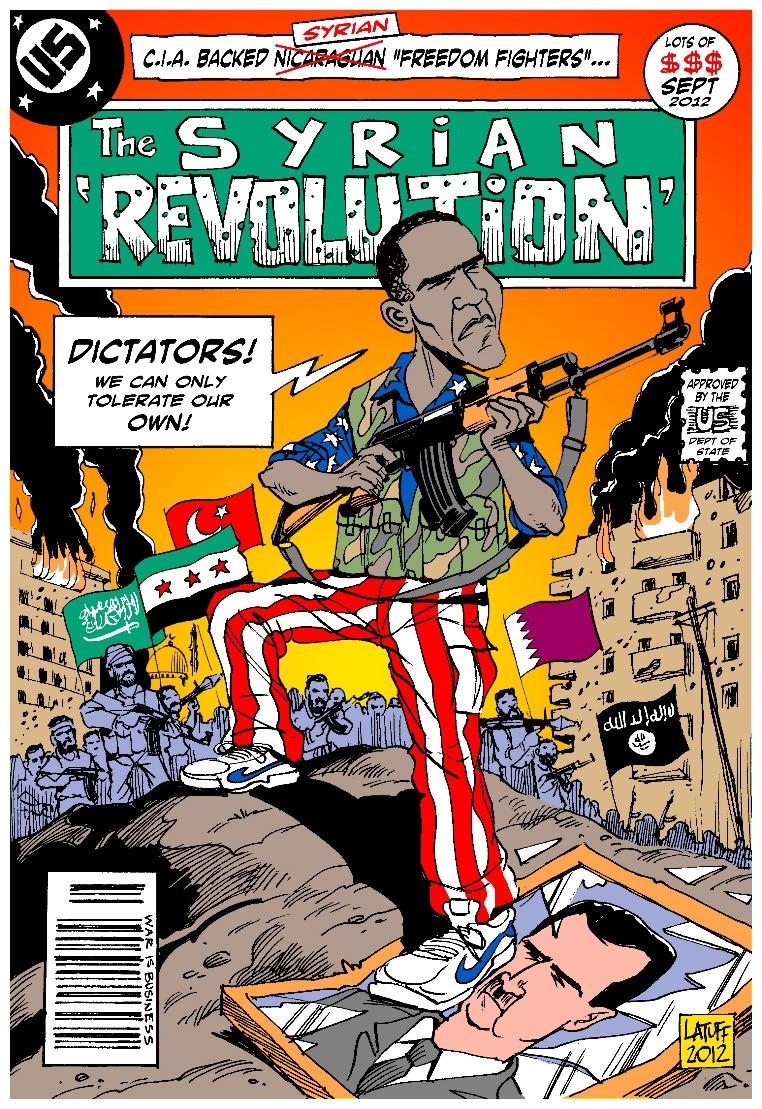
As It Did with Castro in Cuba and Noriega in Panama, the “Mighty Wurlitzer” of U.S. Propaganda Defused Antiwar Sentiment by Painting Syrian President Bashar al-Assad as a Brutal Animal Who Had to Be Removed.
In 1991, famed MIT linguist Noam Chomsky published a political pamphlet called Media Control: The Spectacular Achievements of Propaganda, which provided an examination of U.S. war propaganda and its success from Woodrow Wilson’s World War I Creel Commission to Bush Sr.’s war on Iraq.
According to Chomsky, “Propaganda is to democracy what the bludgeon is to a totalitarian state.” It lulls the masses into acquiescence while preserving the illusion of an open society.
U.S. propaganda had been especially effective because it is subtly designed to arouse moral outrage against the government’s targets by playing up their human rights abuses—real or imagined.
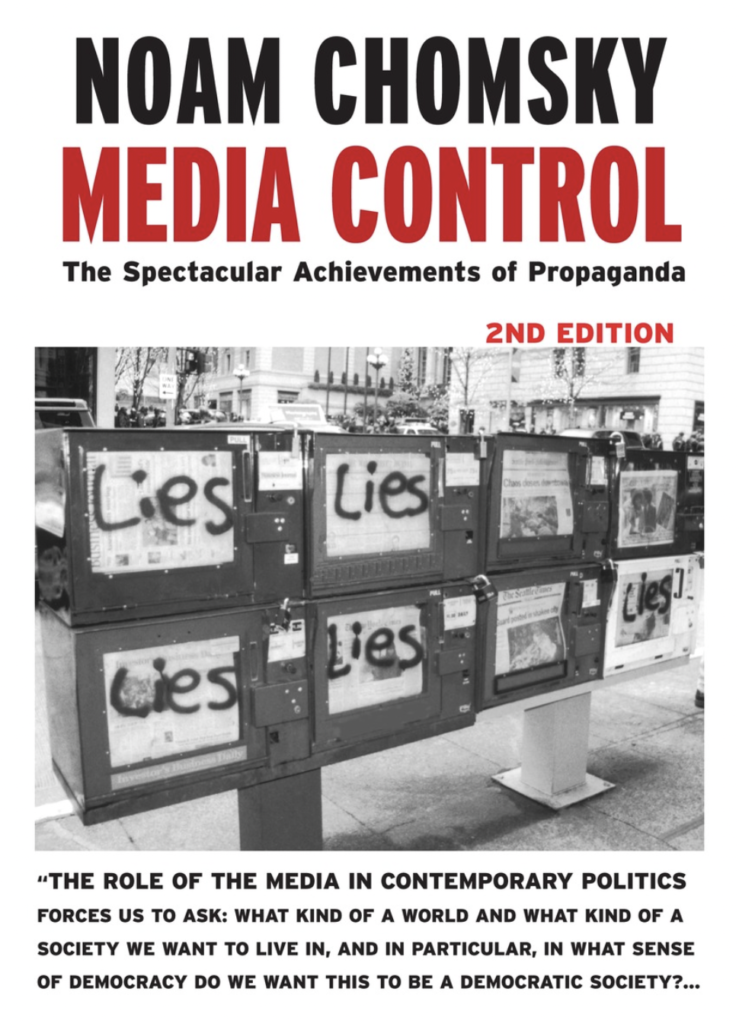
Chomsky’s analysis applies particularly well to the Syrian conflict, where U.S. propaganda has been so good that Chomsky himself at times was taken in by it.
For example, in a Democracy Now! interview on April 5, 2017, Chomsky called the Bashar al-Assad regime “[a] moral disgrace carrying out horrendous acts, the Russians with them.” This is the official U.S. position, which obscures the horrendous acts committed by Assad’s opponents—jihadist terrorists with whom the U.S. has been allied since the war began.[1]
It is revealing that the majority of Syrians—whom the U.S. is purportedly there to protect against the evil Assad—do not consider Assad to be a “moral disgrace.” A 2012 poll found that 55 percent supported him and tens of thousands were mobilized for pro-government rallies when the Arab Spring protests broke out in March 2011.
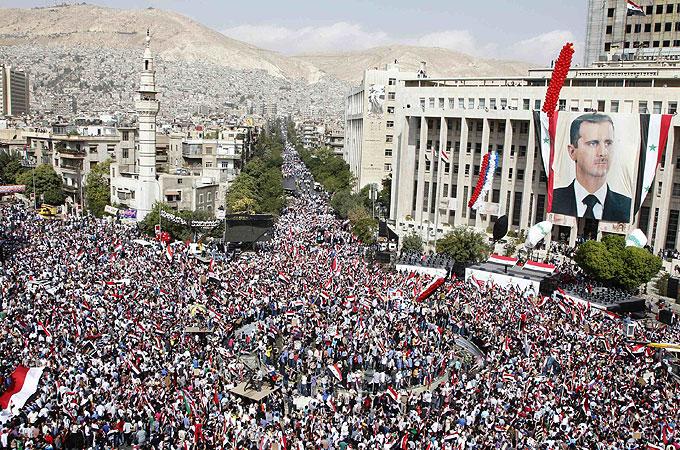
Chomsky was among the signatories to a March 2021 letter decrying the emergence of “pro-Assad allegiances in the name of anti-imperialism among some who normally identify as progressive and left“ and “spread of manipulative disinformation that routinely deflects attention away from the well-documented abuses of Assad and his allies,” and results in alignment with the “governments of Russia and China.”[2]
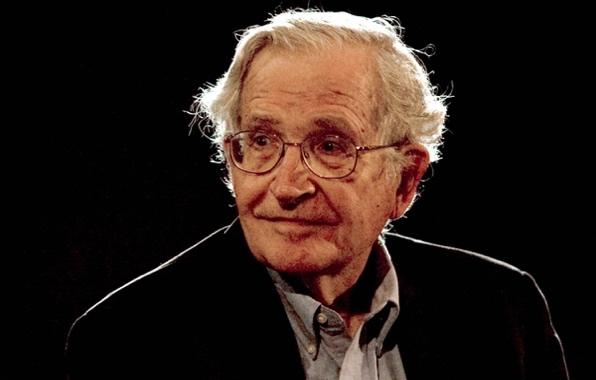
Chomsky also signed a petition published in the New York Review of Books that bought the deceitful and morally hollow U.S. pretense that it needed to stay in Syria to protect the Kurds from a Turkish invasion.
But the truth is that the U.S. has used and then treacherously deserted the Kurds multiple times—not just in Syria but throughout the Middle East—as Chomsky himself has written about. After luring the Kurds into supporting its policies with insincere promises of promoting an independent Kurdish nation, the U.S. callously abandoned them to slaughter by Saddam Hussein in Iraq, by Assad in Syria, and most recently by Recep Tayyip Erdogan in Turkey.
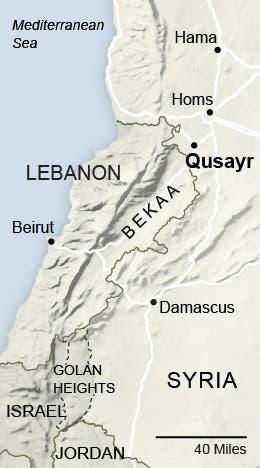
World War in Syria
A.B. Abrams has published a new book, World War in Syria: Global Conflict on Middle Eastern Battlefields (Atlanta: Clarity Press, 2021), which effectively debunks U.S. state propaganda about Syria, and shows the war for what it is—a regime-change operation directed by the U.S. waged via proxy that evolved into a world war that gave an opportunity for many different countries to settle geopolitical scores.

The major players in the conflict included Qatar, Turkey, Kuwait, Jordan, Saudi Arabia, France, Britain, Israel, and the United States which armed and financed jihadist insurgents seeking to topple the regime of Bashar al-Assad.
On the other side, Iran, Russia, Iraq, Hezbollah (Lebanese insurgent group) and North Korea provided military support to the Assad regime that enabled its survival.
The official narrative in the U.S. cast Assad as a butcher and the insurgents favorably.
The U.S. claimed it was arming “moderate rebels” to oust Assad—though most of the rebels were in fact Islamic jihadists.

The U.S. had long sought Assad’s removal because he had ruled over an independent state that was outside the Western sphere of influence and allied with Iran, which the U.S. wanted to isolate.
![Image [Heads of state Hafez al Assad, Muammar al-Qaddafi and Yasser Arafat during the 4th summit of the Steadfastness and Confrontation National Front, in Tripoli, April 12, 1980]](https://covertactionmagazine.com/wp-content/uploads/2021/09/image-heads-of-state-hafez-al-assad-muammar-al-q.jpeg)
Assad further had resisted U.S. designs to build an oil pipeline that could undercut supply routes from Russia.
After 9/11, Washington planned to attack and destroy the governments in seven Middle East countries, with the final target being Iran.
As of 2021, with Ba’athist Iraq toppled, Lebanon on the verge of collapse, Hezbollah militarily stretched and the Chinese and Russian friendly governments of Libya and Sudan violently overthrown with Western backing, this strategy had largely succeeded.
Colonial and Neo-Colonial Past
Syria gained its independence from France in April 1946 after its people had endured years of French occupation and terror.
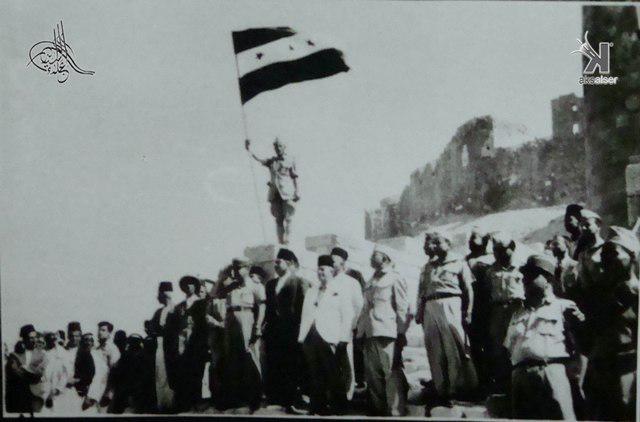
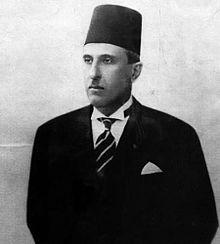
In 1948, Syria waged a war, along with Egypt, Jordan and Iraq, against Jewish settlers in Palestine who established the State of Israel, which included territory historically considered part of Syria.
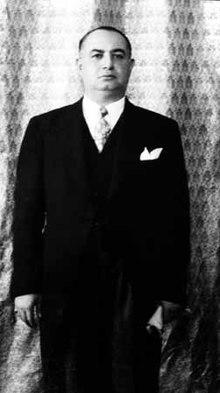
Multiple coups and countercoups were launched in Syria over the next 22 years.
The first, in 1949, was engineered by the CIA against President Shukri al-Quwatli, who was targeted because of his lack of enthusiasm for the Trans-Arabian pipeline, which was intended to transport Saudi Arabian oil to Europe through Syrian territory.
Quwatli’s successor, a general with a “strong pro-French orientation” named Husni al-Zaim, ran what Pentagon cables described as an “army-supported dictatorship with a “strong anti-Soviet attitude.”
His government approved the pipeline in its first week in power, but was overthrown five months later by colonel Sami al-Hinnawi, whose short-lived administration was toppled by another colonel, Adib Shishakli in December.
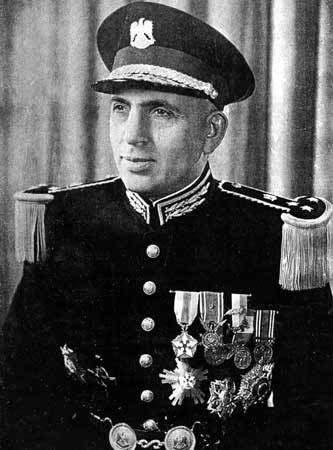
Adib Shishakli [Source: wikipedia.org] 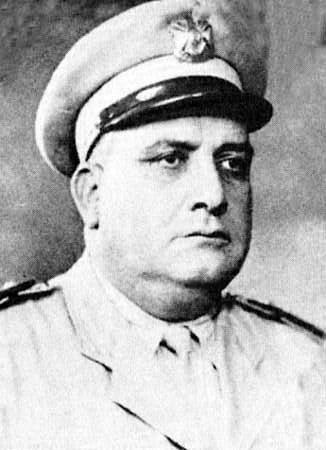
Sami al-Hinnawi [Source: wikipedia.org]
Shishakli’s pro-Western government lasted four years before he too was toppled in a coup.
In January 1957, after Quwatli had been re-elected, CIA director Allen Dulles submitted a report warning that the new Syrian Cabinet was “oriented to the left” and, two months later, warned President Dwight Eisenhower of an “increasing trend toward a decidedly leftist, pro-Soviet government.”
The CIA subsequently went into motion to try to engineer the Syrian government’s overthrow.
The effort was headed by CIA coup masters Howard Stone and Kermit Roosevelt, the grandson of Theodore Roosevelt.

Kermit Roosevelt [Source: harvardmagazine.com] 
Howard “Rocky” Stone receives CIA Distinguished Intelligence Medal from CIA Director William Colby, 1975. [Source: hearinghealmatters.org]
The coup attempt made use of Syrian dissidents based in neighboring Lebanon, one of the most firmly Western-aligned states in the Arab world.
It aimed to restore Adib Shishakli to power—even though he was a figure of ill-repute described by CIA Station Chief in Damascus Miles Copeland as having committed “sacrilege, blasphemy, murder, adultery and theft.”
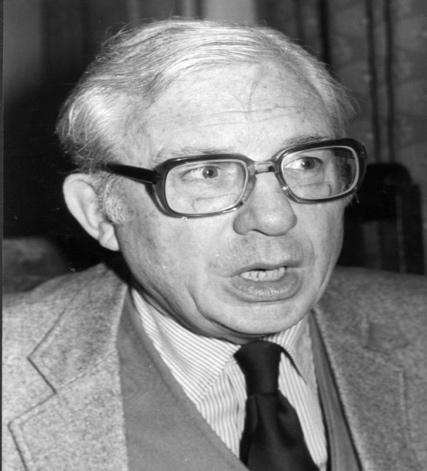
Considerable investments were made at this time to arm and win over Syria’s radical Islamist opposition group, the Muslim Brotherhood, which backed the coup and was later called upon to carry out assassinations of officials the CIA or Britain’s MI6 wanted taken out.
Owing to strong internal opposition, the 1957 CIA coup plot failed, although the CIA continued to plot regime-change operations, including during the presidency of John F. Kennedy.
Syria’s strategic position was particularly important because it bordered one of the NATO alliance’s most powerful member states—Turkey.
Ba’athism and the Assad Dynasty
In 1958, Syria entered a period of short-lived union with the nationalist government in Egypt led by Gamal Abdel Nasser, and in 1966 the Ba’ath party consolidated its power, resulting in closer cooperation with the Soviet Union.

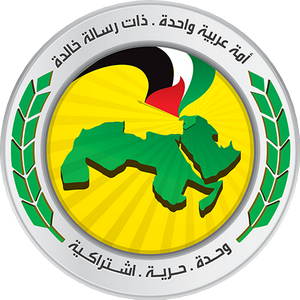
Ba’athism was a school of socialist Arab nationalism thought that stressed the need for rejuvenation of the Arab nation against threats and humiliations by Western imperial powers.
Its rule was consolidated under the long reign of Hafez al-Assad, a former Captain in the Syrian army who established a strong state capable of more effectively resisting foreign intervention.
Security forces were restructured under his direction into a new “coup-proof system.”
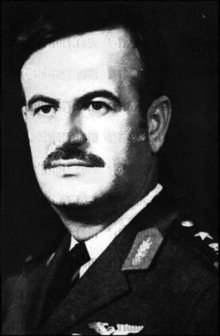
Assad’s administration at the same time oversaw the establishment of popular organizations to widen political participation—including the General Union of Peasants, the General Federation of Trade Unions, General Women’s Federation and General Union of Students—and moved to build institutions which raised living standards and established infrastructure projects including that which provided electricity to the rural population.
The greatest threat to the state came from Islamist elements which led an uprising in Hama in 1982 that resulted in the deaths of more than 1,000 Syrian military personnel and was violently crushed by Assad.
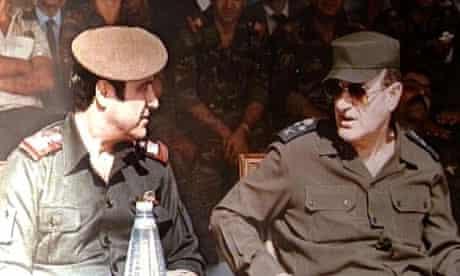
At the time, Damascus accused U.S. intelligence and Western-aligned Arab states Saudi Arabia and Egypt of having supported the jihadists—foreshadowing 2011.
The U.S. National Security Council published a paper around this time titled “The Destabilization of Syria,” which promoted the idea of encouraging Turkey to support attacks on Syria from its northern border—another strategy adopted in the latest Syrian war.
Reuters correspondent Patrick Seale said that Syria was viewed by the Reagan administration as “the enemy, the most militant of Israel’s neighbors, the closest to Moscow, the only substantial obstacle to U.S. designs for the region”—which has changed very little today.
Hafez’s son Bashar, who took over when his father died in 2000, continued with his father’s policy of appointing many Sunni to his Cabinet even though he was an Alawite, an offshoot of Shiism.
An ophthalmologist by training, Bashar was more pro-Western than his father, having presided over Syria’s economic transition away from the Ba’athist state-centered economic system and adopting a neoliberal reform agenda.

In his first years in office, his major reforms included privatization of universities, banks, and media, reducing subsidies on a number of basic goods, reducing tariff protections for domestic industries, and breaking the state monopoly on education which the party had maintained since 1963.
Assad also began considering Syria’s realignment away from traditional partners such as North Korea and Russia and towards closer partnership with the Western world—prompting John Kerry among others to see Assad as a potential asset.
However, Hezbollah’s victory in the 2006 Israel-Lebanon War caused a panic in elite U.S. circles—and intensified the long-held goal of regime change.
U.S. Historical Support for Islamic Extremists
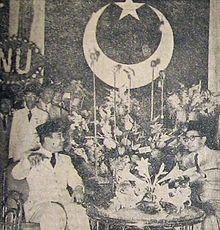
The Syrian war should not be seen in isolation but as part of a larger pattern of the U.S. allying with Islamic fundamentalists in the attempt to fulfill its foreign policy goals.
A key precedent was established in Indonesia in the 1950s when the CIA gave a million dollars to the Islamist Masjumi Party to bolster its election chances and thwart the socialist regime of Achmed Sukarno and the Communist Party of Indonesia (PKI) which, at the time, was the largest Communist party in Southeast Asia.
When Sukarno was overthrown in 1965 in a CIA-backed coup, the Islamists partook in a mass orgy of violence directed against Sukarno and the PKI.
The U.S. embassy established kill lists as rivers and streams became clogged with dead bodies.
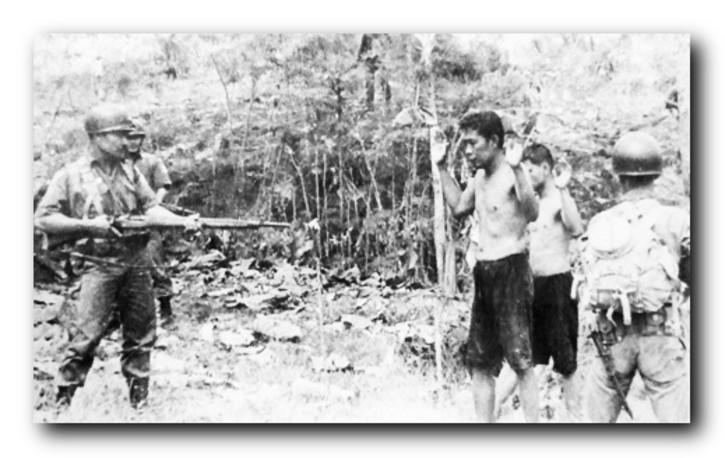
In the 1980s, the CIA mobilized Islamic jihadist groups in Pakistan to fight the Soviet-backed regime in Afghanistan. The CIA at the time openly recruited militants from Arab states in Africa as well as from Saudi Arabia while framing the insurgency as a righteous struggle against communist totalitarianism.
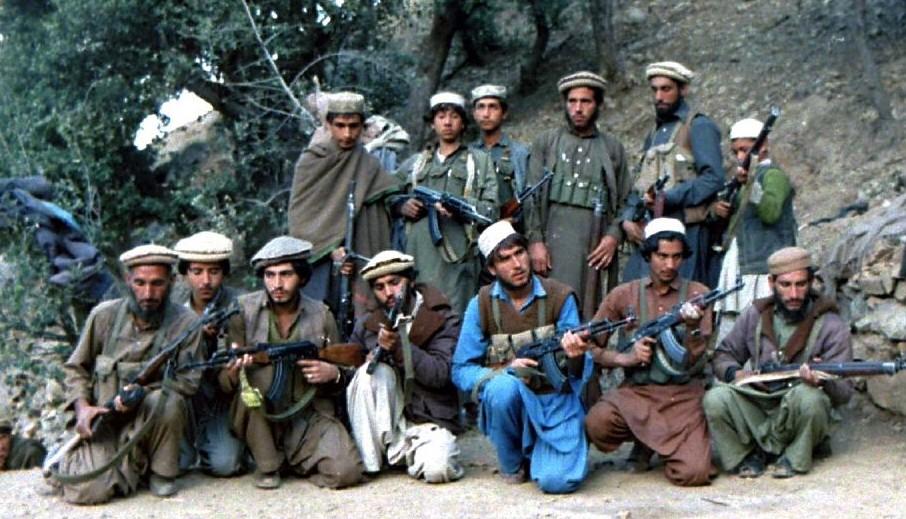
Graham E. Fuller, a key architect of the jihadist insurgency in Afghanistan, stated in the 1990s that “the policy of guiding the evolution of Islam and of helping them against our adversaries worked marvelously well in Afghanistan against the Red Army. The same doctrines can still be used to destabilize what remains of Russian power.”

And indeed they have been.
Jihadis R US
Leaked emails from leading private intelligence firm Stratfor, which included notes from a meeting with Pentagon officials, confirmed that the war in Syria was waged from the outset as part of a subversive operation by NATO members that was designed to force a “collapse of the [Syrian] state from within.”
The documents further showed that air operations against Syria to tip the balance in favor of anti-government militant groups were under serious consideration from the war’s earliest days, with the Pentagon believing that demonization of the Syrian state, namely through “media attention on a massacre” by government forces, would be vital to facilitating an air attack.
The Syrian rebellion began with the eruption of Arab Spring protests in the city of Daraa in March 2011 after school children were arrested for painting anti-government graffiti.
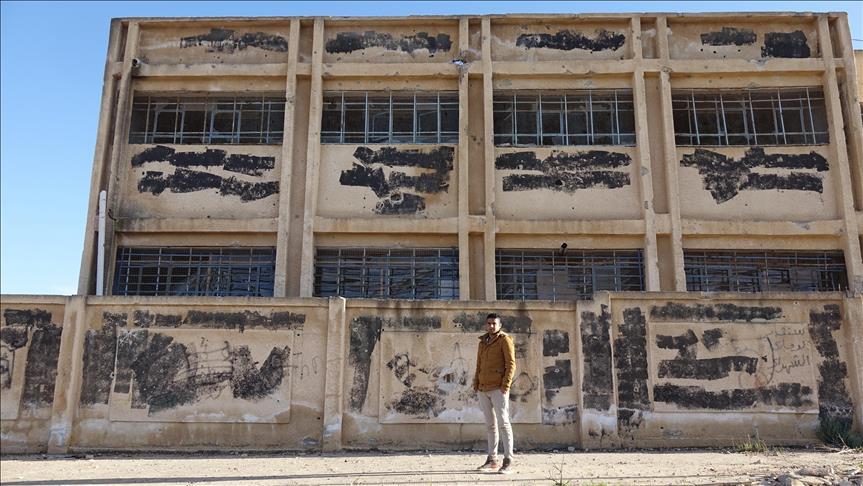
While there were legitimate grievances—exacerbated by a period of drought which prompted rural-urban migration—the uprising was dominated by jihadi elements from the outset.
The Free Syrian Army (FSA) favored by the U.S., according to Foreign Policy magazine, was a “Turkish-backed proxy force with ties to extremist groups,” and was responsible for “killing scores of unarmed civilians.”

One of its offshoots, the Khalid ibn Al Waleed brigade—claimed to be part of the “moderate opposition” to Assad—broadcast the beheading of unarmed prisoners by a child using a machete on the internet and claimed to have beheaded 80 other prisoners.
The founder of another group that received U.S. and Saudi funding, Jaysh al-Islam, was an extremist scholar influenced by Saudi Arabia’s Wahhabist Islam. He pledged to his fighters that “the jihadists will wash the filth of the rafda [a slur for Shiites] from Greater Syria, they will wash it forever if Allah wills it.”
As in Afghanistan in the 1980s, young Sunni men from across the Muslim world streamed across the Syria-Turkey border to try to achieve this latter goal.
Jordan’s King Abdullah II referred to them as “jihadists whose central aim is to create a seventh-century theocracy in the heart of the Middle East.”

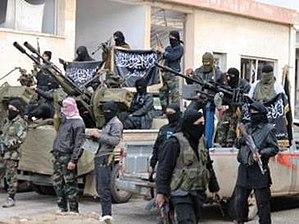
Many of the groups later consolidated into the Al-Nusra Front whose elite fighters came from Chechnya, Dagestan, and included Uyghurs from China’s Xinjiang province among other places.
In May 2015, when the jihadists took control of the ancient city of Palmyra, they proceeded to demolish the World Heritage site located there and conducted mass executions of captured soldiers and more than 400 civilian supporters.
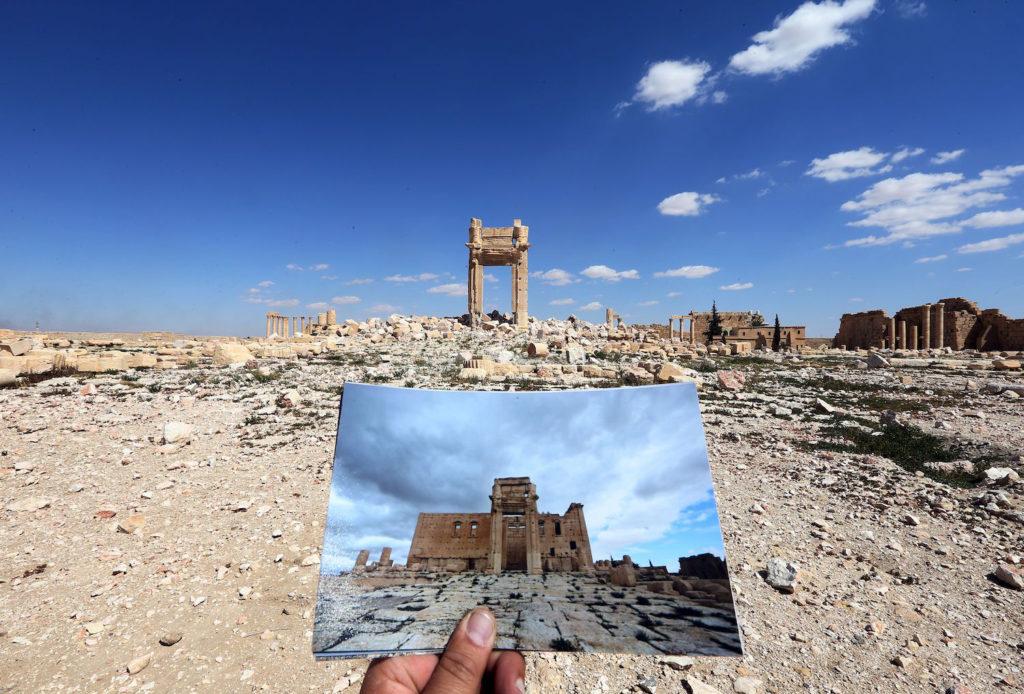
CIA officers assisted Qatar in procuring weapons for the rebel opposition in Syria, while others posted in Turkey worked with Turkish intelligence to channel the weapons to the insurgents.
By March 2013 more than 160 military cargo flights from Saudi Arabia and Qatar had landed in Turkey and Jordan and, by 2016, Saudi Arabia was providing $700 million per year in funding for insurgent groups—around 40% of the Syrian state’s pre-war defense budget.
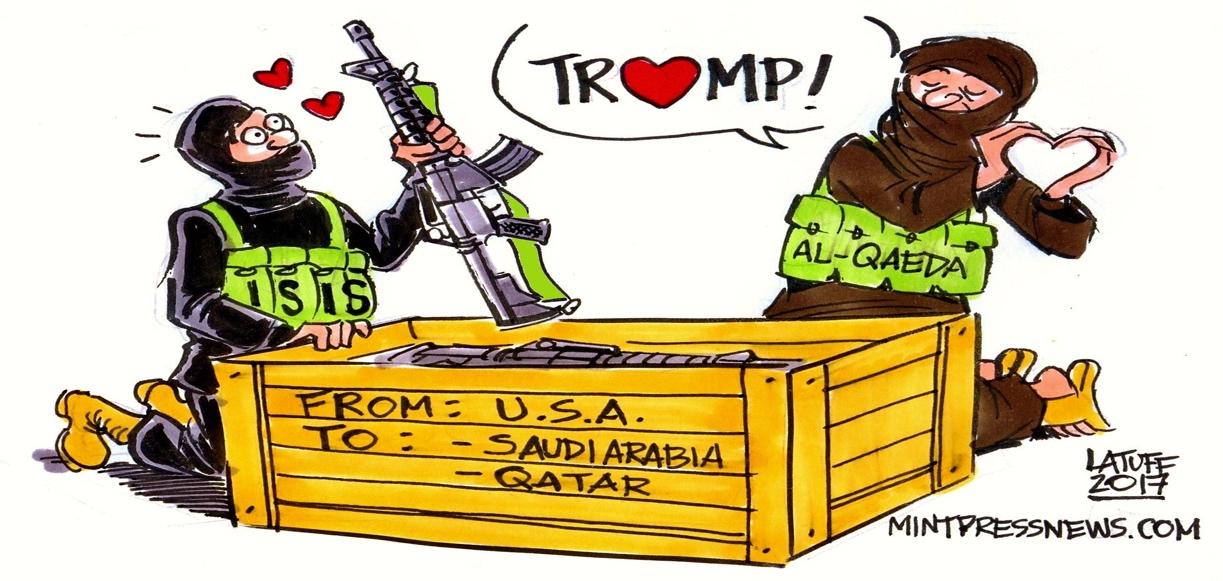

Some jihadist attacks—including rocket attacks on Damascus International Airport—were ordered directly by Saudi Prince Salman bin Sultan, the son of the Saudi Defense Minister.
Turkish forces meanwhile established brigades named in honor of the Ottoman empire, which Turkish leader Recep Tayip Erdogan was intent on re-establishing.

Timber Sycamore
The primary U.S. operation to arm Syrian insurgents was Operation Timber Sycamore, carried out by the CIA with support from British, Qatari, Saudi and Jordanian intelligence services and the Pentagon.
The program saw relatively little regulation of whom the arms went to, and lacked accountability, as weaponry very consistently ended up in the hands of UN-recognized terrorist organizations such as al-Qaeda and IS.
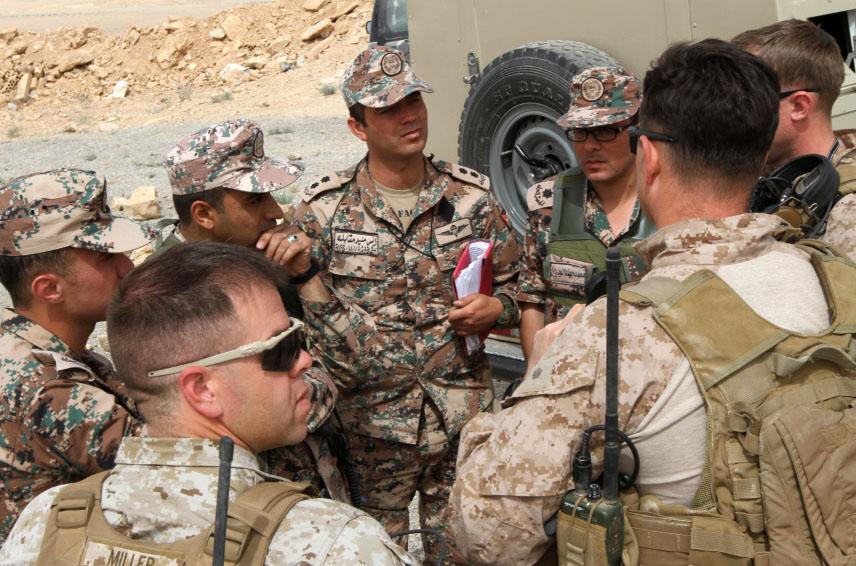
U.S. military personnel deployed to Syria directly included Special Forces, engineering experts and medical and psychological warfare teams who were supplied through a network of small airstrips set up on Syrian soil which received MC-130 and CV-22 transports.
Small numbers of U.S. troops embedded with rebel counterparts—including the so-called Syrian Democratic Forces (SDF)—and called in air strikes from U.S. bases in Jordan, the United Arab Emirates (UAE), Qatar, and other countries.
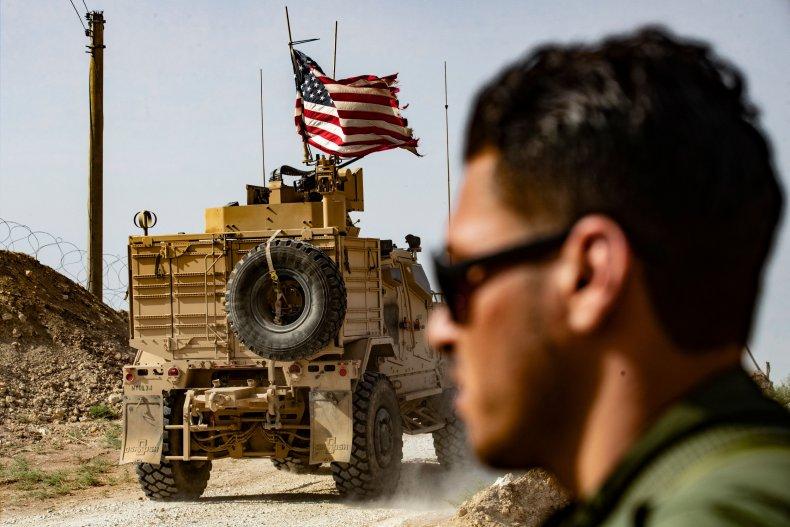
According to Abrams, the U.S. was “in effect invading Syria to seize a portion of its territory and was doing so in a much more subtle and cost-free way than prior operations in Iraq, Afghanistan, Grenada, Panama or other target states.”
Israel—Choosing the Islamic State
This invasion was carried out with the support of Israel, which armed and supported the anti-government insurgents in Syria and launched hundreds of missile strikes—including some that succeeded in killing Hezbollah and Iranian Quds Force commanders.
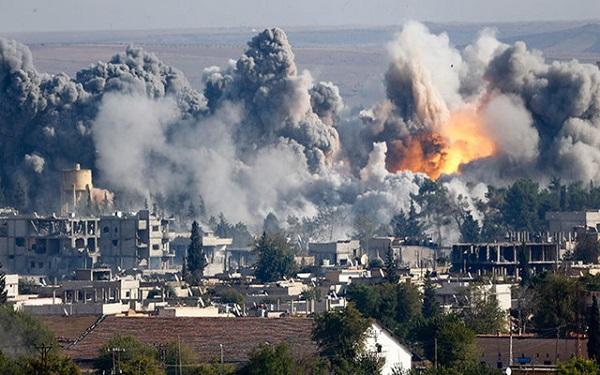
The Israelis had a strong interest in overseeing the overthrow of the Assad government, which would represent the final death of the Arab nationalist threat that had overhung the Jewish state since the early 1950s.

Such an outcome would also facilitate much greater freedom of action for the Israel Defense Forces (IDF) in the region, with Syrian ballistic missiles, chemical weapons and air defenses all having for decades been directed primarily at restraining Israel’s military power.
Israel furthermore wanted to strike a blow at Hezbollah and Iran—Israeli Defense Minister Moshe Ya’alon stated that, “in Syria, if it is a choice between Iran and the Islamic State, I choose the Islamic State … Our greatest enemy is the Iranian regime that has declared war on us.”[3]
Double Standards on Human Rights
During the U.S. campaign to seize Raqqa from the Islamic State in alliance with the SDF in 2017, the U.S. used depleted uranium shells—one of the most toxic weapons in the world with often horrifying long-lasting effects—against civilian areas.

The U.S. Air Force was also reported to have used white phosphorus munitions [known as Willie Peter in Vietnam] in the town of Hajin in Deir ez-Zor.
Exposure to Willie Peter caused deep burns which were extremely difficult to heal, and its fumes were highly toxic, with the strike on Hajin reportedly causing large fires.
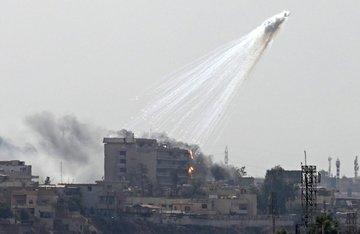
The use of these weapons exposed the double standards of U.S. policy in its professed concern for human rights—as its military operation resulted in large-scale human rights abuses and atrocities.
During the campaign to seize Raqqa, U.S.-led coalition air strikes were killing at one point more than 100 civilians per day.
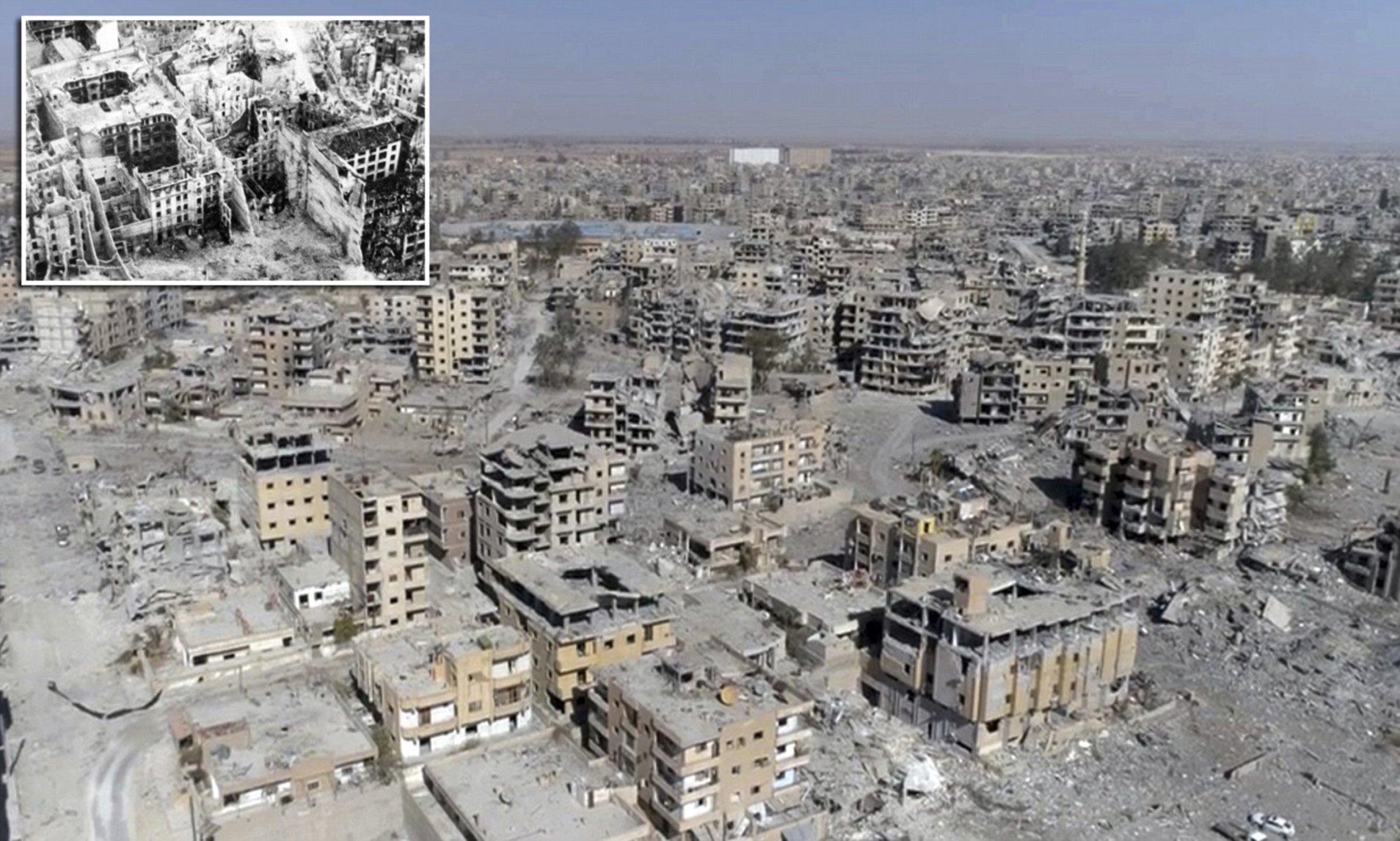
North Korea, Hezbollah, and Iran
To counter the foreign invasion, the Assad regime drew support from Hezbollah, the Lebanese resistance group, and North Korean People’s Army (KPA) advisers who had fought alongside the Syrian Arab Army (SAA) in all its major wars since the Six-Day War in 1967.[4]
Representatives of the insurgency claimed in 2013 that Korean pilots flew Syrian Air Force aircraft in combat and that North Korea deployed special forces units which were considered “fatally dangerous on the battlefield.”

Hezbollah leader Hassan Nasrallah—who had himself received military training in North Korea—justified Hezbollah’s intervention on the grounds that the West’s goal in Syria was to “push the country into chaos and internal battles like in Iraq.”
Washington think tanks had indeed called for Syria’s partition along sectarian lines—much as they had done with Iraq.
In 2017, the respected Hezbollah fighters formed a “Golan Liberation Brigade” with Iraq’s Harakat Hezbollah Al Nujaba militia, aiming to end the Israeli occupation of the Golan Heights.
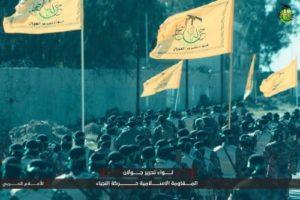
With the North Koreans, Hezbollah played an instrumental role in the SAA’s capture of Al Qusayr in the spring of 2013 in one of the war’s turning points.

Iran’s extensive involvement in the war was exemplified by its carrying out more than 700 drone strikes against Islamic State targets in Syria, some of which operated in close proximity to U.S. forces.
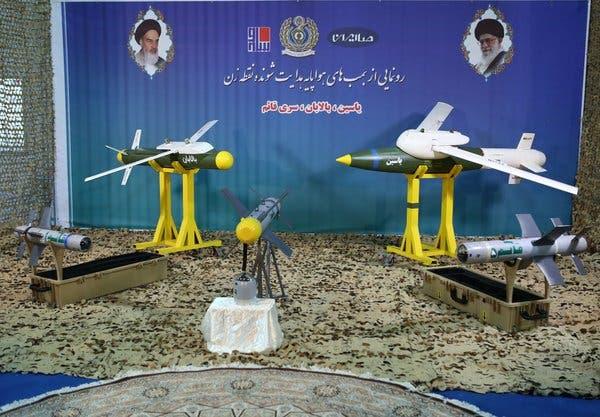
Iran’s influential Fatemiyoun Brigade, comprised primarily of Shiites from Afghanistan’s Hazara minority, was formed in 2014 with support from Iran’s Quds force.
The Hazara faced severe religious and ethnic discrimination in Afghanistan stemming from their support for the 1980s’ Soviet government and had a long-standing grudge against Wahhabist jihadist groups which could be settled on the battlefield in Syria.

Information War
According to Abrams, the Obama era saw the maturing of information warfare capabilities that were so key to the Syrian conflict.
The Obama administration laid the ground for major investments in information warfare by the State Department, forming a close public-private sector partnership with American tech giants to capitalize on their unique capabilities to manipulate public opinion globally.
As The New York Times reported in an article entitled “U.S. Groups Helped Nurture Arab Uprisings,” not only were the uprisings against the Syrian state from March 2011 closely connected to Western NGOs, where the leaders of several anti-government groups had received training, but the U.S. Congress and State Department had worked with tech giants to strengthen these operations.
The Times reported: “A number of the groups and individuals directly involved in the revolts and reforms sweeping the region … received training and financing from groups like the International Republican Institute, the National Democratic Institute and Freedom House.”
Skills provided included using social networking and mobile technologies to promote calls for political change along Western lines. Among those sponsoring the meeting were Facebook, Google, MTV, Columbia Law School, and the State Department.
A leak of Hillary Clinton’s emails shows cooperation between Google and the State Department to undermine the Syrian government.

Google Ideas director Jared Cohen, formerly an adviser to Clinton, wanted to encourage defections among the Syrian armed forces and launched a “defection tracker,” which was designed to “encourage more people to defect and give confidence to the rebel opposition.”
Google also renamed various streets in Damascus after jihadi leaders—which was also done in Libya.
A key part of the information war was control over the media, which blamed the Syrian government for atrocities later found to have been committed by the FSA and other insurgents.
In August 2012, for example, the Western media reported that the massacre of 245 people in the Daraya suburb was carried out by “Assad’s army”; however, an investigation by British journalist Robert Fisk found that the FSA had been responsible.


Alternative media sources meanwhile attacked critics of the war who exposed U.S. government deceptions as “defenders of Syria’s bloodthirsty dictator and butcher,” to quote Spencer Ackerman in the hip Wired magazine.
In 2018, The Intercept published an article by Mehdi Hassan entitled “Dear Bashar Al-Assad Apologists: Your Hero Is a War Criminal Even If He Didn’t Gas Syrians.” Who these Assad apologists were, Hassan never says.

The White Helmets—a humanitarian organization nicknamed for its protective hats that allegedly saved over 100,000 war victims—were an important part of the information war.

Photographs published in alternative media, however, exposed them as a creation of U.S. and British intelligence agencies.
White Helmets co-founder James Le Mesurier, a former member of the Olive Group private security firm, was a suspected British MI6 agent who died under suspicious circumstances.

Canadian journalist Eva Bartlett reported from the front lines in Syria that the White Helmets frequently staged videos for propaganda purposes.
British reporter Vanessa Beeley showed that they had ties to private security firms and the “deep state” in both the U.S. and UK and were comprised of members of al-Qaeda-linked terror groups. Their purpose, she said was to fabricate atrocities and provide pretexts for Western military intervention.

Eva Bartlett [Source: wikipedia.org] 
Vanessa Beeley [Source: globalresearch.ca]
Chemical Gas Attacks Blamed on “Animal Assad”
The information war reached its apex over allegations of sarin gas attacks in Syria which Western governments and media blamed on Assad.
Alleged chemical attacks in eastern Ghouta provided a pretext for the Obama administration to try to initiate air strikes on Syria in the fall of 2013, and for the Trump administration to escalate the air war in 2018.

In April 2018, Trump tweeted: “Many dead, including women and children, in mindless CHEMICAL attack in Syria. Area of atrocity is in lockdown and encircled by Syrian Army, making it completely inaccessible to outside world. President Putin, Russia and Iran are responsible for backing Animal Assad. Big price to pay…”

However, Carla Del Ponte, the former chief prosecutor of two UN international criminal law tribunals who served on the international commission of inquiry on the Syrian Arab Republic, reported that “opponents of the regime in Syria were the ones conducting the Sarin gas attacks.”
The case for the insurgents being responsible was further strengthened by a study by Theodore A. Postol, a professor of science, technology, and national security policy at the Massachusetts Institute of Technology (MIT) and Richard M. Lloyd, an analyst at Tesla Laboratories.
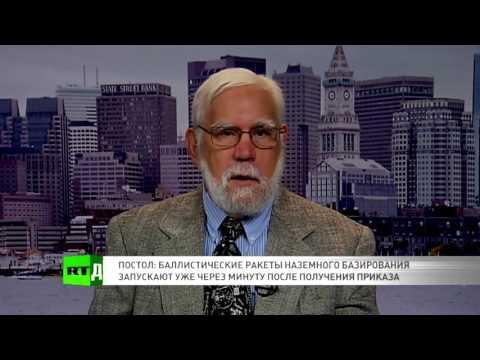
The two analysts suggested that the rockets that delivered the nerve agent were propelled by motors taken from BM-21 122 mm artillery rockets which were used extensively by both the SAA and by insurgent forces. Calculating potential maximum ranges for the sarin-filled rockets, the experts concluded that the attack could not have been carried out by the SAA positions as Western governments and media had previously asserted.
Additional reports indicated that the chemical weapons used in Ghouta in 2013 had been supplied by Saudi Arabian intelligence services, which had provided significant material support to the insurgency.
In February 2018, U.S. Defense Secretary James Mattis stated that the U.S. had “reports from the battlefield from people who claim [chemical weapons] have been used [but] we do not have evidence of it.”

President Barack Obama in short had cherry-picked evidence from select intelligence reports to make a case before the public for bombing Syria, and Trump had done the same, but proof was never established—just like with the WMD in Iraq.
Russia to the Rescue
The Russians entered the war in September 2015 on the invitation of the Syrian government. Particularly valuable were Russia’s new Su-34 strike fighters which Russian state media dubbed the “ultimate ISIL-crushing machine.”
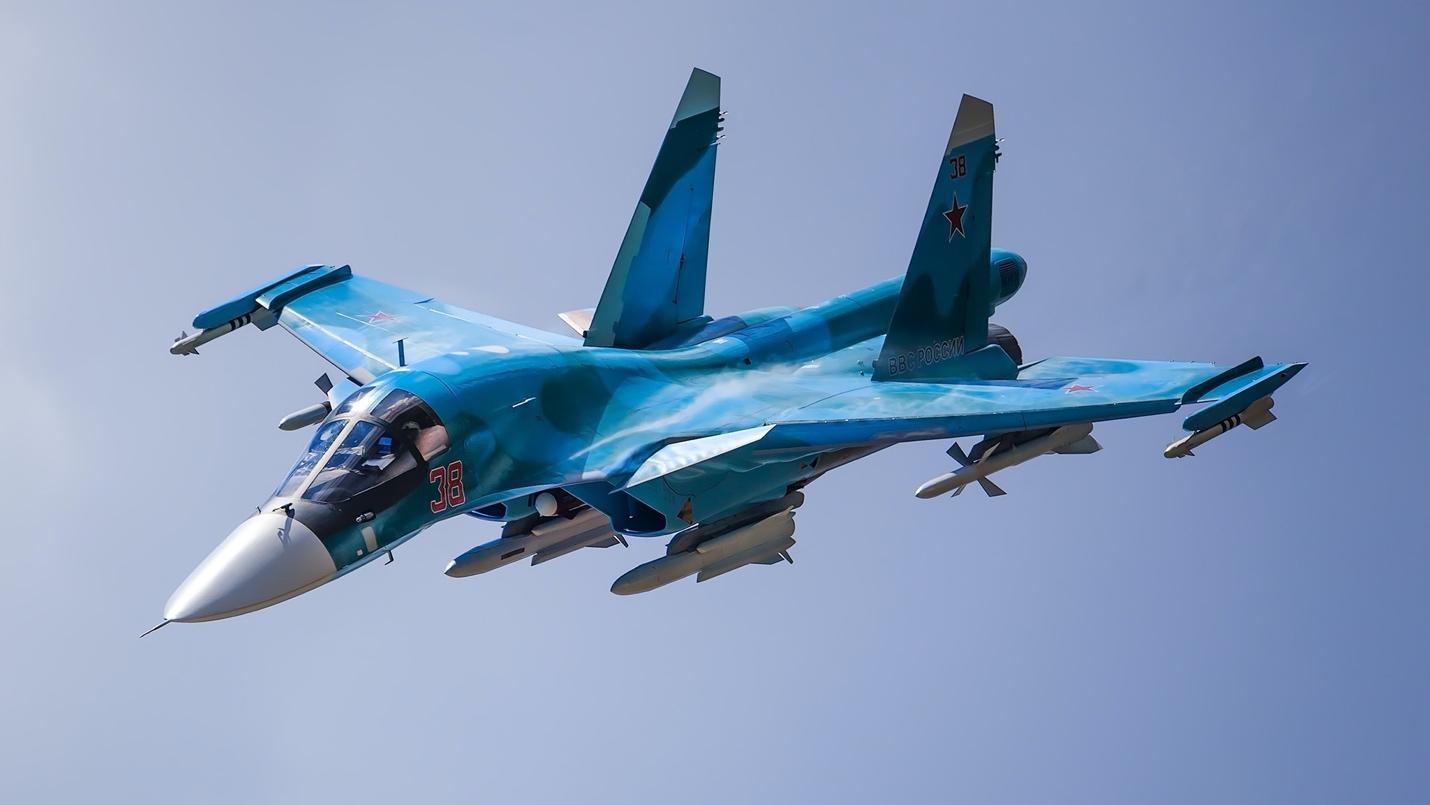
Hardline hawks in the U.S. like Senator Lindsey Graham (R-SC) began to warn that Russia was “walking over Obama like a small child,” prompting greater U.S. arms supplies to the rebels and demands for a more expansive U.S. bombing campaign.

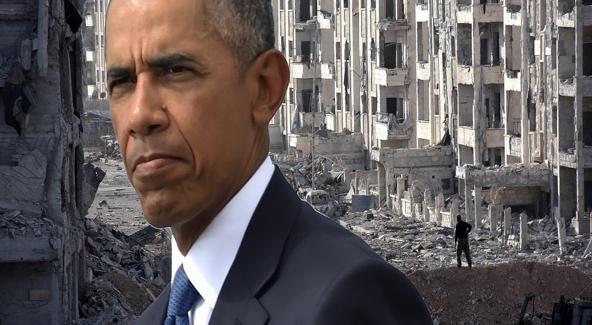
Russian armed forces proved critical in helping the SAA to retake Syria’s largest city, Aleppo, in 2016, fighting an enemy equipped with American TOW anti-armor missiles provided by the CIA.
This was another major turning point in the war—which the mainstream media as usual misrepresented.

Afterwards, the Russians stayed to help reconstruct Aleppo and provided hot food to the 100,000 refugees who chose to escape to government-controlled territory [in Jibreen] from an eastern-Aleppo rebel enclave. Vanessa Beeley reported that the people said “Jibreen was heaven compared to life in East Aleppo [under rebel control]. They could not just believe how well they were being treated—the Russians were hugely appreciated.”
![Syrians who fled east Aleppo reach for Russian aid in the government-controlled area of Jibreen [AP]](https://covertactionmagazine.com/wp-content/uploads/2021/09/syrians-who-fled-east-aleppo-reach-for-russian-aid.jpeg)
According to Abrams, the Russian military intervention was “historically significant for shaping the future of its Middle Eastern ally and preventing Damascus from suffering the same fate as Kabul had in 1992.”
The danger was an increasing threat of a war with the U.S., which directly fought Russian troops in Syria on several occasions.

Kurds
Washington’s policy in Syria often lacked coherence as it was committed to stamping out ISIL while at the same time supported militant jihadist groups fighting the Assad government who sometimes also fought each other.
At a certain point, the U.S. came to consider its ally Turkey as being too independent and was accused of being behind a failed 2019 coup attempt against Turkish President Recep Tayyip Erdogan.[5]
After the Russian intervention, the Obama administration offered support to the Kurdish enclave in Rojava—which attracted leftists in its embrace of anarchist governing ideals—and its People’s Protection (YPG) militias which fought the Islamic State, Turkey, and the Assad regime.
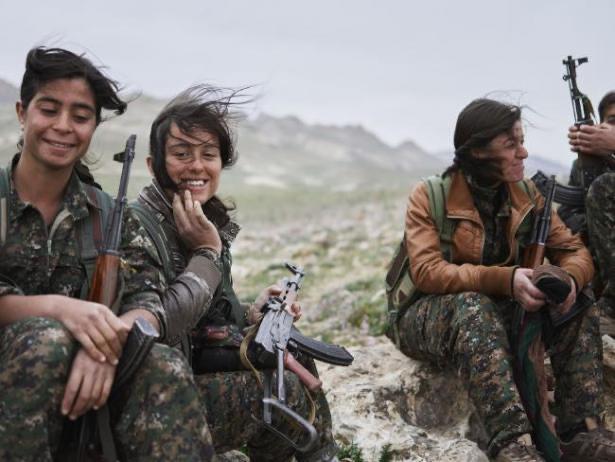
U.S. bombing helped the YPG gain victory at the Battle of Kobani in March 2016 which cemented ties between the Rojava and the U.S.
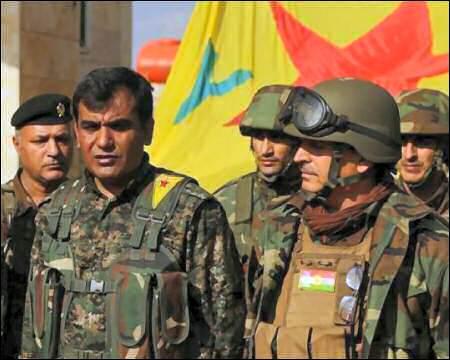
The latter relationship—along with U.S. backing of the Syrian Democratic Forces (SDF) helped to give the U.S. an important foothold in Syria—though one that was threatened by the Russians who also courted the YPG.
Lost War

The U.S. strategy aimed by the late 2010s to keep “the Assad regime out of areas liberated from ISIS [IS],” as U.S. Special Envoy to Syria Fred Hof put it.
The capture of Raqqa in October 2017 enabled U.S. access to the Al Omar oil field, the largest in Syria, which could sustain operations in the country and undermine Syria’s post-reconstruction efforts.
The U.S. and its proxies also maintained control over parts of the city of Idlib, where the standoff with Damascus was expected to continue in the late 2020s.
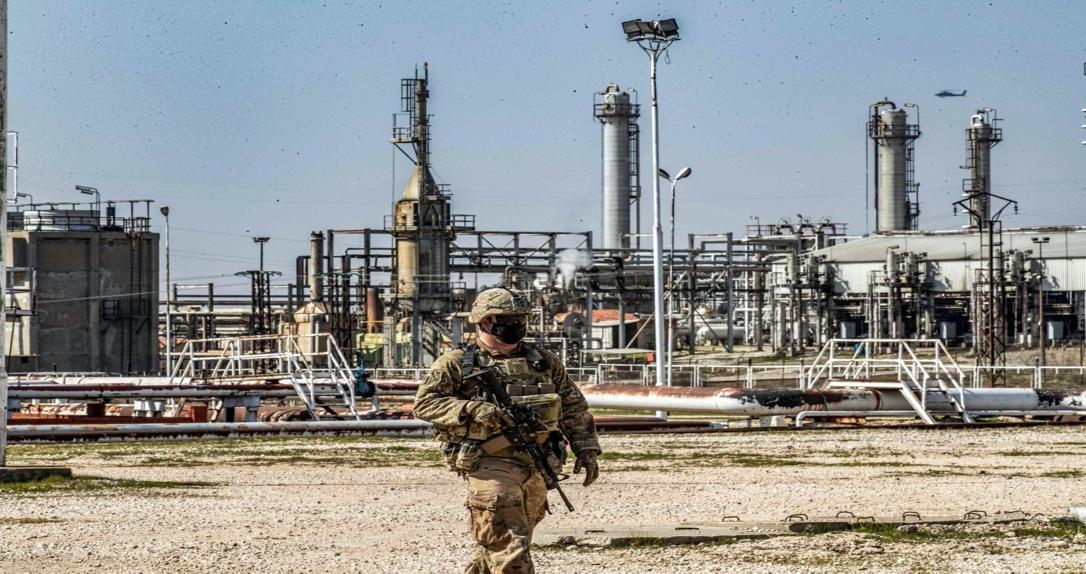
Besides seizing oil fields, the U.S. began intensifying economic warfare efforts during the Trump presidency through sanctions that were justified under fraudulent pretexts—as is the norm.
The Biden administration showed signs of an even harder line against Syria than Trump. It a) doubled down on the sanctions; b) sent a military convoy in its first week; and c) conducted air strikes against Iranian Quds-force-backed militias in its sixth week.
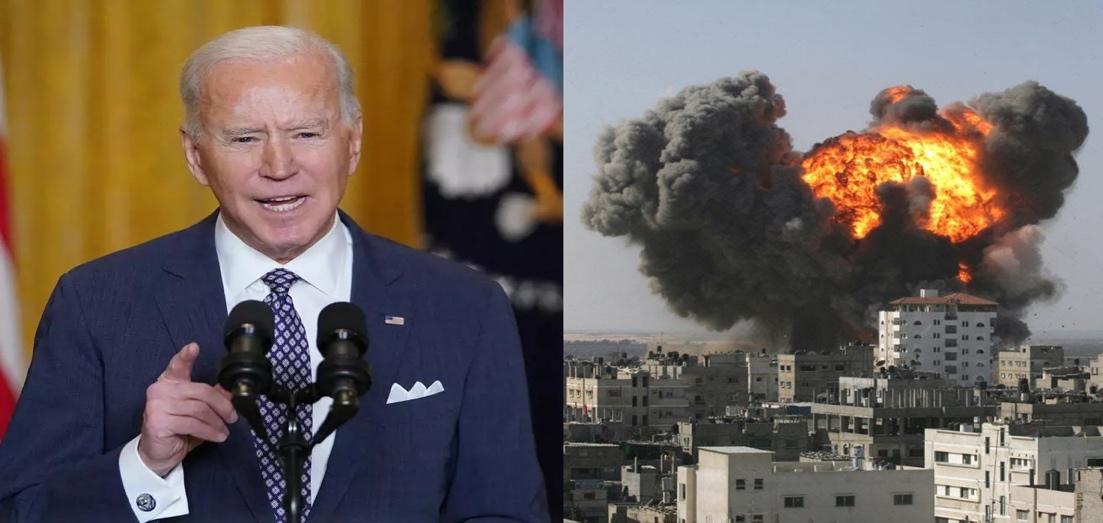
The Syrian war by this point had been for all intents and purposes lost, enabling Syria to avoid the fate of Afghanistan, Iraq, Yugoslavia, Libya and so many other countries that were balkanized and destroyed by U.S. invasion.
In many ways it was a pyrrhic victory for Syria, though, as the country sustained 380,000 to 580,000 deaths and $250 billion in infrastructural damage, and could no longer affect regional affairs beyond its own borders.
Spectacular Achievements of Propaganda
Success of the U.S. propaganda was apparent when Donald Trump faced a barrage of criticism when he proposed withdrawing U.S. troops from Syria in October 2019.
Even left-wing intellectuals were aghast, warning about reprisals by Turkey against the Kurds.
The U.S. in Syria had perfected ways of selling a war of aggression as an act of humanitarian intervention.
The public had been conditioned to view Assad just as Trump portrayed him—an animal—fitting a pattern of leaders targeted by the U.S. for regime change, including Saddam Hussein, Fidel Castro, Muammar Qaddafi, Slobodan Milošević and others.

Time magazine cover depicting Assad as the “Monster of the Century.” [Source: twitter.com] 
Time cover from 2018 depicting him as a “Lethal Tyrant.” [Source: theamericansun.com]
Lost in the mainstream media depictions were the larger geopolitical stakes of the Syrian war, the brutality of the jihadist rebels backed by the U.S. and its proxies, and how the war fit a long pattern of U.S. regime-change operations.
The public today remains deluded in believing that only a long-term U.S. military presence could save Syria and its people.
This view reflects an engrained colonial mentality, which has haunted Syrians for decades and has proven very difficult to shake.

-
In a 2016 interview by Daniel Falcone and Saul Isaacson in Truthout, Chomsky was asked about Assad and said, “He’s pretty horrible. In this case, I don’t think he’s really being demonized. It’s pretty awful.” ↑
-
The letter further asserted that the pro-Assad “writers and outlets have mushroomed in recent years, and have often positioned Syria at the forefront of their criticisms of imperialism and interventionism, which they characteristically restrict to the West; Russian and Iranian involvement is generally ignored.” That Russia and Iranian intervention may have helped Syria preserve its autonomy, was welcomed by the local population and saved Syria from the fate of countries destroyed by U.S. imperialism is not considered. Unlike in past cases Chomsky has chronicled, the disinformation is now supposedly being promoted not by mainstream corporate media but by independent writers and intellectuals perniciously in the service of foreign powers and Bashar al-Assad and resulting in mounting opposition to U.S. intervention, which somehow is a bad thing. ↑
-
Former Israeli Consul General in New York Alon Pinkas told The New York Times that the status quo, in which Syrians were killing each other was favorable to Israel. He stated: “For Jerusalem, the status quo, horrific as it may be from a humanitarian perspective, seems preferable to either a victory by Mr. Assad’s government and his Iranian backers or a strengthening of rebel groups, increasingly dominated by Sunni jihadists. This is a playoff situation in which you need both teams to lose, but at least you don’t want one to win—we’ll settle for a tie. Let them bleed, hemorrhage to death; that’s the strategic thinking here. As long as this lingers, there’s no real threat from Syria.” ↑
-
Bolstering Syria represented part of a broader North Korean effort to push back against Western interests in the Third World. Pyongyang was among the first to offer Damascus its support once the Islamist insurgency had escalated, and was one of just twelve states to vote against UN General Assembly Resolution 66/253 condemning the Syrian state in February 2012. ↑
-
Turkish authorities issued warrants for two CIA agents accused of being behind the coup including Henri J. Barkey. ↑
CovertAction Magazine is made possible by subscriptions, orders and donations from readers like you.
Blow the Whistle on U.S. Imperialism
Click the whistle and donate
When you donate to CovertAction Magazine, you are supporting investigative journalism. Your contributions go directly to supporting the development, production, editing, and dissemination of the Magazine.
CovertAction Magazine does not receive corporate or government sponsorship. Yet, we hold a steadfast commitment to providing compensation for writers, editorial and technical support. Your support helps facilitate this compensation as well as increase the caliber of this work.
Please make a donation by clicking on the donate logo above and enter the amount and your credit or debit card information.
CovertAction Institute, Inc. (CAI) is a 501(c)(3) non-profit organization and your gift is tax-deductible for federal income purposes. CAI’s tax-exempt ID number is 87-2461683.
We sincerely thank you for your support.
Disclaimer: The contents of this article are the sole responsibility of the author(s). CovertAction Institute, Inc. (CAI), including its Board of Directors (BD), Editorial Board (EB), Advisory Board (AB), staff, volunteers and its projects (including CovertAction Magazine) are not responsible for any inaccurate or incorrect statement in this article. This article also does not necessarily represent the views the BD, the EB, the AB, staff, volunteers, or any members of its projects.
Differing viewpoints: CAM publishes articles with differing viewpoints in an effort to nurture vibrant debate and thoughtful critical analysis. Feel free to comment on the articles in the comment section and/or send your letters to the Editors, which we will publish in the Letters column.
Copyrighted Material: This web site may contain copyrighted material the use of which has not always been specifically authorized by the copyright owner. As a not-for-profit charitable organization incorporated in the State of New York, we are making such material available in an effort to advance the understanding of humanity’s problems and hopefully to help find solutions for those problems. We believe this constitutes a ‘fair use’ of any such copyrighted material as provided for in section 107 of the US Copyright Law. You can read more about ‘fair use’ and US Copyright Law at the Legal Information Institute of Cornell Law School.
Republishing: CovertAction Magazine (CAM) grants permission to cross-post CAM articles on not-for-profit community internet sites as long as the source is acknowledged together with a hyperlink to the original CovertAction Magazine article. Also, kindly let us know at info@CovertActionMagazine.com. For publication of CAM articles in print or other forms including commercial internet sites, contact: info@CovertActionMagazine.com.
By using this site, you agree to these terms above.
About the Author

Jeremy Kuzmarov holds a Ph.D. in American history from Brandeis University and has taught at numerous colleges across the United States. He is regularly sought out as an expert on U.S. history and politics for radio and TV programs and co-hosts a radio show on New York Public Radio and on Progressive Radio News Network called “Uncontrolled Opposition.”
He is Managing Editor of CovertAction Magazine and is the author of six books on U.S. foreign policy, including Obama’s Unending Wars (Clarity Press, 2019), The Russians Are Coming, Again, with John Marciano (Monthly Review Press, 2018), Warmonger. How Clinton’s Malign Foreign Policy Launched the U.S. Trajectory From Bush II to Biden (Clarity Press, 2023); and with Dan Kovalik, Syria: Anatomy of Regime Change (Baraka Books, 2025).
Besides these books, Kuzmarov has published hundreds of articles and contributed to numerous edited volumes, including one in the prestigious Oxford History of Counterinsurgency .
He can be reached at jkuzmarov2@gmail.com and found on substack here.

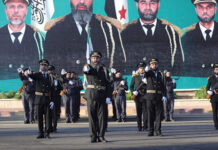
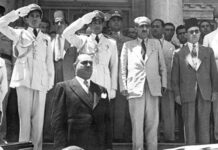
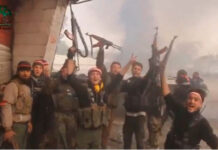


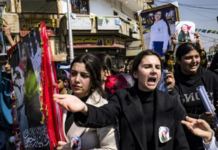

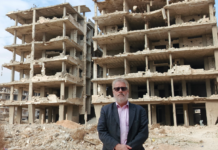


[…] the purpose of the strikes is to interrupt Tehran’s flow of weapons to Lebanese Hezbollah—which established a “Golan liberation brigade” in support of Syrian leader Bashar al-Assad”—and to diminish Iran’s military forces and proxies in […]
[…] the purpose of the strikes is to interrupt Tehran’s flow of weapons to Lebanese Hezbollah—which established a “Golan liberation brigade” in support of Syrian leader Bashar al-Assad”—and to diminish Iran’s military forces and proxies in […]
This is the best article I’ve ever seen about Bashar al-Assad and the U.S. regime’s smears against him in order to ‘justify’ their rape of Syria. Thank you, Jeremy Kuzmarov. Today, I added to my next book a link — at the place where it introduces “Syria’s President, Bashar al-Assad” — to this masterpiece, because this article is the best thing that I have yet seen about him, and about the background of the U.S. regime’s rape of Syria.
As shown in the disclaimer below this article, the views in this article are not necessarily shared by all the employees and executives of the company:
Disclaimer: The contents of this article are the sole responsibility of the author(s). Covert Action Publications, Inc. (CAP), including its Board of Directors (BD), Editorial Board (EB), Advisory Board (AB), staff, volunteers and its projects (including CovertAction Magazine) are not responsible for any inaccurate or incorrect statement in this article. This article also does not necessarily represent the views the BD, the EB, the AB, staff, volunteers, or any members of its projects
Pedantic note, Mr Kuzmarov; the 2012 poll found that 70% of Syrians supported president Bashar al-Assad. This poll was carried out by none other than the Central Intelligence Agency itself — from INSIDE Syria. Years later this support became over 85% as indicated by Assad’s vote in direct presidential elections as decreed at Geneva 2.
How were you able to find this information that the Central Intellgence Agency conducted this poll?
Wir sind über alle Lügen gestolpert die man über Präsident Bashar Al-Assad erzählt hat, nur glauben kann keiner die Lügen, denn wer den Präsidenten kennt weiß das der Präsident ein liebenswürdiger Mensch ist.
Wer es bis Heute immer noch nicht verstanden hat, Kriege zerstören die Welt, die Natur und die Natur zerstört den Mensch. Nun haben wir schon viel Welten unter uns begraben, die fünfte Welt das sind wir die Heute auf der Erde noch leben, die aber bald Geschichte sind. Das ist doch eine große Freude, das die Natur Stärker ist als der Mensch.
Interesting read. Yes Chomsky seems like a controlled opposition. If you support this book’s message leave some positive Amazon reviews. I just bought a copy and some guy with a pro imperalist narrrative put the average rating way down.
Very good interview here with the writer: https://thesaker.is/interview-with-a-b-abrams-about-his-latest-book-and-the-war-in-syria/
The book’s Facebook page: https://www.facebook.com/AbramsWorldWarinSyria
Amazon: https://www.amazon.com/World-War-Syria-Conflict-Battlefields/dp/1949762467
Publisher’s site: https://www.claritypress.com/product/world-war-in-syria-global-conflict-on-middle-eastern-battlefields/
[…] The U.S. May Have Lost the Military War in Syria, But Has Won the Propaganda War at Home, by Jeremy … […]
https://www.youtube.com/watch?v=ours_8ygO0A
Chomsky is no saint and his name here seems to be mostly click bait. Anyone who accepts U.S. statements at face value is allowing themselves to be wilfully ignorant of their actual intentions: global hegemony for the rich and powerful corporate-military bosses.
https://www.youtube.com/watch?v=A0hi7wgsKZ0
Ah yes, the Holocaust Memorial Museum – which for some reason does not mention the Palestinian nakba nor many other ethnic cleansing/genocidal military actions taken by the U.S. empire and its sycophants.
Excellent analysis for the most part, but it significantly misrepresents the entry of troops from Arab nations into Palestine in 1948. In April, the Zionists murdered the entire population of cities, including Deir Yassin, which caused panicked refugees to flood the surrounding Arab states, which were ill-equipped to harbor them. Therefore in May the Arab states sent nominal forces into Palestine in a vain effort to stanch the flow of refugees by stopping the Zionist terrorism.